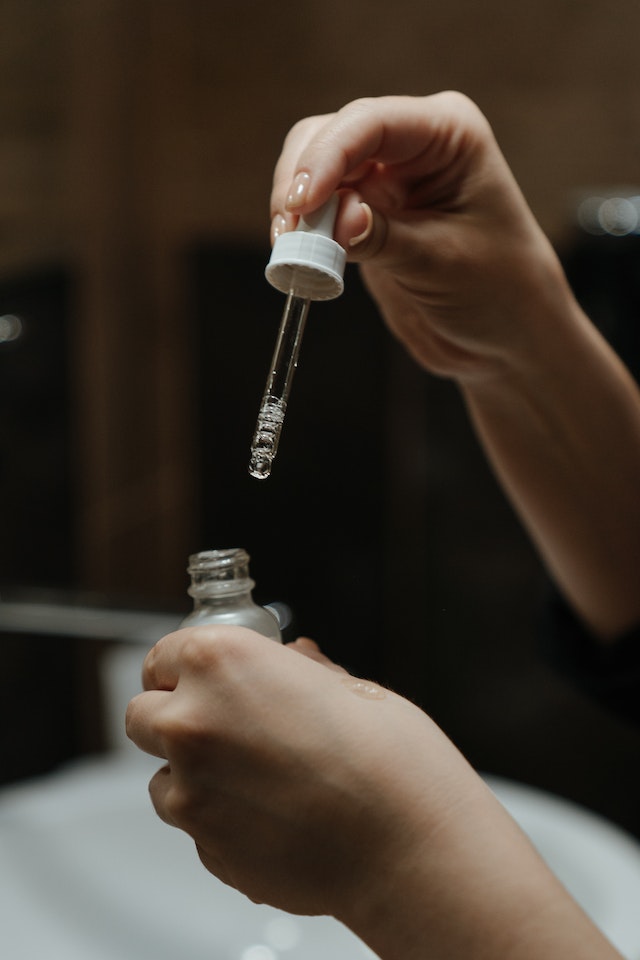Salicylic acid is a type of organic acid (BHA) that is commonly used in skincare products for its ability to exfoliate and treat various skin conditions. It is derived from salicin, which is found naturally in the bark of willow trees and certain plants.
Salicylic acid is a beta-hydroxy acid (BHA) that works by breaking down the bonds between dead skin cells, helping to unclog pores and prevent acne. It also has anti-inflammatory properties that can help reduce redness and irritation in the skin.
In addition to its use in skincare, salicylic acid is also used in the production of other products, such as aspirin, and in the preservation of foods and cosmetics. It is important to note that salicylic acid can be irritating to some people’s skin, and should be used in moderation and according to product instructions.
In This Article
Uses of Salicylic Acid:

Salicylic acid ( a type of BHA) has a variety of uses, including:
1. Treating Acne:
Salicylic acid is a common ingredient in many acne treatments due to its ability to exfoliate and unclog pores. Its ability to penetrate the pores and unclog them, reducing the appearance of pimples, blackheads, and whiteheads.
2. Exfoliating:
Salicylic acid exfoliates the skin by dissolving the bonds between dead skin cells, helping to unclog pores, smooth skin texture, and brighten the complexion. It works to improve the texture and tone of the skin.
3. Treating Warts:
Salicylic acid can help to remove warts by breaking down the tissue and keratin that make up the wart.
4. Treating Psoriasis and Other Skin Conditions:
Salicylic acid can help to soften and remove scales caused by psoriasis and other skin conditions.
5. Preventing Dandruff:
Salicylic acid can also be used in hair and scalp products to help exfoliate the scalp and treat dandruff, psoriasis, and other scalp conditions. Salicylic acid is often used in anti-dandruff shampoos to help exfoliate the scalp and prevent flakes.
6. Preserving Foods and Cosmetics:
Salicylic acid is used as a preservative in some food and cosmetic products.
7. Anti-inflammatory Properties:
Salicylic acid has anti-inflammatory properties that can help reduce redness and inflammation caused by acne, rosacea, and other skin conditions.
8. Anti-aging Benefits:
Salicylic acid can help reduce the appearance of fine lines and wrinkles by exfoliating the skin and promoting cell turnover.
9. Keratolytic Properties:
Salicylic acid is a keratolytic agent, which means it helps to break down and soften thick, rough, or scaly skin patches caused by conditions such as psoriasis, seborrheic dermatitis, and keratosis pilaris.
Best Salicylic Acid Serums:
There are many salicylic acid serums available on the market, so it can be challenging to determine which ones are the best for your specific needs. However, here are some popular and highly-rated options:
1. The Ordinary Salicylic Acid 2% Solution:
This serum contains 2% salicylic acid and is designed to exfoliate the skin and unclog pores, making it a popular choice for those with acne-prone skin.
2. Paula’s Choice Skin Perfecting 2% BHA Liquid Exfoliant:
This serum contains 2% salicylic acid and is designed to exfoliate and unclog pores, as well as reduce the appearance of fine lines and wrinkles.
Cosmedix Clarity Skin-Clarifying Serum:
This serum contains 0.5% salicylic acid and is designed to exfoliate and clarify the skin, as well as soothe inflammation and redness.
3. Vichy Normaderm PhytoAction Daily Deep Cleansing Gel:
This serum contains 0.5% salicylic acid and is designed to exfoliate and unclog pores, while also providing hydration to the skin.
4. Murad Rapid Relief Acne Spot Treatment:
This serum contains 2% salicylic acid and is designed to quickly reduce the appearance of acne and prevent future breakouts.
It’s important to note that everyone’s skin is different, so what works for one person may not work for another. It’s always a good idea to patch test a new product before using it all over your face, and to consult with a dermatologist if you have any concerns or questions about using salicylic acid serums.
Side Effects of Salicylic Acid:
While salicylic acid is generally considered safe when used as directed, it can cause some side effects, including:
1. Dryness and Peeling:
Salicylic acid can be drying to the skin, especially when used in high concentrations or for extended periods of time. This can lead to flakiness, redness, and peeling.
2. Irritation:
Some people may experience irritation or allergic reactions to salicylic acid, which can cause redness, itching, and swelling.
3. Sun Sensitivity:
Salicylic acid can make the skin more sensitive to the sun, so it’s important to wear sunscreen and protective clothing when using products containing salicylic acid.
4. Discoloration:
In rare cases, salicylic acid (a type of BHA) can cause hyperpigmentation or darkening of the skin.
5. Interaction with Other Medications:
Salicylic acid can interact with certain medications, such as blood thinners and oral diabetes medications, so it’s important to speak with a healthcare provider before using salicylic acid if you are taking any other medications.
It’s important to follow the product instructions and use salicylic acid in moderation to minimize the risk of side effects. If you experience any persistent or severe side effects, discontinue use and consult with a healthcare provider.
Recommended Read:











